There are some substances that are toxic to humans but have no effect on bees. If bees get their nectar from flowers containing these substances, the resulting honey can be a toxic honey, poisonous honey, with psychoactive effects on humans.
Toxic flowers that produce toxic honey:
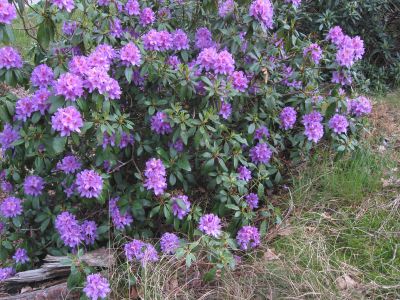 – Rhododendron ponticum (aka Azalea pontica) has alkaloids that are very poisonous to humans. Not for the bees.
– Rhododendron ponticum (aka Azalea pontica) has alkaloids that are very poisonous to humans. Not for the bees.
History tells us through Aristotle, Xenophon, Strabo, that in the first century, the Roman troops were poisoned with this type of honey, while they were attacking the Heptakometes in Turkey. They became delirious, nauseous, and easy to defeat.
Read more on the properties and characteristics of rhododendron honey here: How is rhododendron honey? Origins and characteristics.
– Andromeda flowers, pieris japonica, or lily of the valley shrubs, contain  grayanotoxins, which are very toxic and paralyze the limbs and diaphragm, and death comes instantly.
grayanotoxins, which are very toxic and paralyze the limbs and diaphragm, and death comes instantly.
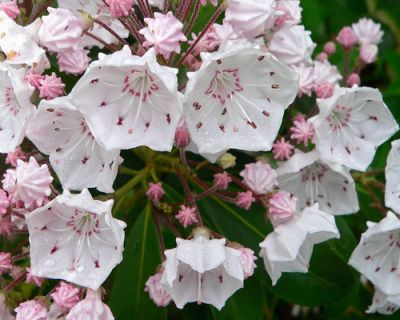 – Kalmia latifolia, aka calico bush, mountain llaurel, spoon-wood, ivybush, sheep laurel, lambkill, clamoun, a beautiful evergreen shrub found in eastern United States, that is also the state flower of Connecticut and Pennsylvania, includes grayanotoxin and arbutin, which are toxic to animals like horses, goats, cattle, deer, monkeys, and humans.
– Kalmia latifolia, aka calico bush, mountain llaurel, spoon-wood, ivybush, sheep laurel, lambkill, clamoun, a beautiful evergreen shrub found in eastern United States, that is also the state flower of Connecticut and Pennsylvania, includes grayanotoxin and arbutin, which are toxic to animals like horses, goats, cattle, deer, monkeys, and humans.
The ingestion causes gastrointestinal irritation, hemorrhage, and death.
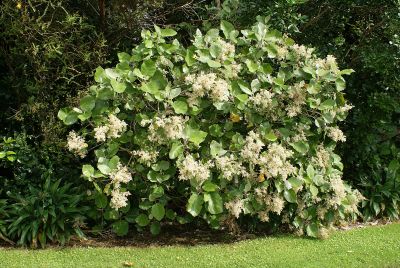 – Wharangi bush, melicope ternate, from New Zealand, also produces fatal toxins. Bees gather honeydew produced by the vine hopper insects, which are feeding on those tutu plants. This introduces the poison tutin into honey. But since December 2001, the beekeepers have reduced the risk of producing toxic honey, by closely monitoring tutu, hopper, and foraging conditions. To reduce the risk of tutin poisoning, people should not eat honey taken from the risk areas of New Zealand.
– Wharangi bush, melicope ternate, from New Zealand, also produces fatal toxins. Bees gather honeydew produced by the vine hopper insects, which are feeding on those tutu plants. This introduces the poison tutin into honey. But since December 2001, the beekeepers have reduced the risk of producing toxic honey, by closely monitoring tutu, hopper, and foraging conditions. To reduce the risk of tutin poisoning, people should not eat honey taken from the risk areas of New Zealand.
-Datura plants in Mexico and Hungary
-Belladonna flowers and henbane from Hungary
-Serjania lethalis from Brazil
-Gelsemium sempervirens from American Southwest
-Coriaria arborea from New Zealand
-Hyoscyamus niger l. – the predictions of the High Priestess in Oracle of Delphi were induces by the toxins released from this plant.
-Datura Inoxia from Poland
-Narcotic opium honey – also results from areas where there are opium poppy cultivation.
Read about all Types of honey covered on this site.
Why are some types of honey toxic?
There are two main groups of toxins that can be present in flower nectar: diterpenoids and pyrrazolidine alkaloids.
1. Diterpenoids (grayanotoxins) are found in some plants of the Ericacea family belonging to the sub-family Rhododendron, like Rhododendron ponticum, but also in Pieris, Agarista and Kalmia.
Grayanotoxins are polyhydroxylated cyclic diterpenes, also known as andromedotoxin, acetylandromedol, rhodotoxin and asebotoxin, studied in 1996 by G DE BODT.
2. Pyrazolidine alkaloids, are found in different honey types and the potential intoxication by these substances was reviewed by J A Edgar, E L Roedner and R J Molyneux in 2002.
What is grayanotoxin?
Grayanotoxins is also known as andromedotoxin, acetylandromedol or rhodotoxin and can be found in leaves, twigs or flowers of plants belonging to genera of the Ericaceae family, comprising among others, the Rhododendron, Pieris, Agarista and Kalmia genera.
The toxin can be found in other supplements available on the market, such as labrador tea, cigarettes and a variety of decoctions used in alternative medicine.
More than 25 grayanotoxin isoforms have been isolated from Rhododendron, the common garden plant around the world, mainly known as azalea. 3 of these isoforms are particularly dangerous, as reported by case reports in the eastern Black Sea area.
Currently, grayanotoxin 1 and 3 are thought to be the principal toxic isomers. Grayanotoxin 1 and 2 have been found in honey, leaves and flowers of Rhododendron ponticum and Rhododendron flavum.
Mad honey contains mainly grayanotoxin 3, while 1 and 2 are found in smaller amounts.
 Rhododendron ponticum contains Grayanotoxin 1 and 2. Picture credit
Rhododendron ponticum contains Grayanotoxin 1 and 2. Picture credit
Grayanotoxin 1 is also present in Rhododendron simsii, as reported from an intoxication case in Hong Kong.
Some honey from Grouse Mountain, British Columbia and Canada, caused a similar type of poisoning, and grayanotoxins 2 and 3 were found.
 Red Azalea (Rhododendron simsii) contains Grayanotoxin 1. picture credit Prenn
Red Azalea (Rhododendron simsii) contains Grayanotoxin 1. picture credit Prenn
Plants that make poisonous honey? Where do they grow?
There have been cases of honey poisoning, though reported very rarely in the literature, in Caucasus, Turkey, New Zealand, Australia, Japan, Nepal, South Africa and different countries in North and South America.
Is there toxic honey in the US?
In the USA, grayanotoxin-contaminated honey is mainly produced from:
– Western Azalea (Rhododendron occidentale) found from Oregon to southern California,
– California Rosebay (Rhododendron macrophyllum) found from British Columbia to central California,
– Rhododendron Albiflorum found from British Columbia to Oregon and in Colorado.
– Mountain laurel (Kalmia latifolia)
– Sheep laurel (Kalmia angustifolia).
What are the symptoms of poisoning with toxic honey?
Shortly after ingestion we can see the first symptoms: dizziness, weakness, excessive perspiration, nausea, and vomiting.
Other symptoms: low blood pressure or shock, bradyarrhythima (slowness of the heart beat associated with an irregularity in the heart rhythm), sinus bradycardia (a slow sinus rhythm, with a heart rate less than 60), nodal rhythm (pertaining to a node, particularly the atrioventricular node), Wolff-Parkinson-White syndrome (anomalous atrioventricular excitation) and complete atrioventricular block.
! While poisoning from grayanotoxins is rarely fatal in humans and generally lasts for no more than 24 hours, it can be lethal for animals (there are lots of cattle and pet poisoning cases from the ingestion of the leaves, flowers, and nectar of rhododendrons).
Scientists say that symptoms are caused by an inability to inactivate neural sodium ion channels, resulting in continuous increased vagal tone. Grayanotoxin containing products are currently sold online, and this may pose an increasing risk. (see Jansen SA in his study “Grayanotoxin poisoning: ‘mad honey disease’ and beyond.”, from 2012)
Specific plants trigger specific symptoms:
– Honey produced from the nectar of Andromeda polifolia contains high enough levels of grayanotoxin to cause full body paralysis and potentially fatal breathing difficulties due to diaphragm paralysis.
– Honey obtained from spoonwood and allied species such as sheep-laurel can also cause illness.
– Honey from Lestrimelitta limao also produces this paralyzing effect seen in the honey of A. polifolia.
Read more about poisoning, how to avoid it and how to treat it in How dangerous is mad honey poisoning?
Do we need medical assistance if poisoned with toxic honey?
According to FDA, the intoxication is rarely fatal and recovery generally occurs within 24 hours, so intervention may not be required.
Severe low blood pressure usually responds to the administration of fluids and correction of bradycardia and therapy with vasopressors (agents that stimulate contraction of the muscular tissue of the capillaries and arteries) is only rarely required.
If you’ve ingested a larger quantity of honey, things get worse, especially because your panic can rise more than expected, go and see a medical doctor and tell him about the honey. It’s safer.
! Even Manuka honey can be toxic!!
It can be contaminated from a plant that grows near the manuka bushes. It’s actually impossible to stop bees from harvesting it, too. A new dispute on manuka honey market: Is it toxic or not?
Which is why New Zealand’ regulations mention the tests that need to be done in order to insure a non-toxic honey for the population.
Please read: How is manuka honey tested? Can we trust those tests?
Is fermented honey toxic?
In South Africa, in 1945, a bird was found intoxicated, with an abnormal flight, after it had consumed honey fermented in the sun. The honey was a good natural product until it fermented. After that, the scientists called it toxic.
Can honey ferment and become toxic?
Yes, if honey can ferment if it was harvested too soon, before it matured in the comb.
On the other hand, people produce mead – a fermented alcoholic beverage, made of honey, water and yeast, also known as meadhing. The ancients called it “nectar of the gods”. And this is surely not toxic. 🙂

Read more about mead:
· Do you want a homemade mead recipe?
· This 9000 years old booze is back on top. Let’s all mead now!
· From where to buy mead wine?
Other toxic honeys:
· Mad Honey! Are you high? – a specific honey with real psychedelic qualities, produced in Turkey.
· Viper’s Bugloss honey – potentially hepatotoxic if consumed in large quantities.
********************************
References and picture credit:
http://en.wikipedia.org/wiki/Honey
http://en.wikipedia.org/wiki/Kalmia_latifolia
http://gardening.lohudblogs.com/2009/04/24/japanese-pieris-or-andromeda/
http://www.terrain.net.nz/friends-of-te-henui-group/table-1/rangiora-new.html

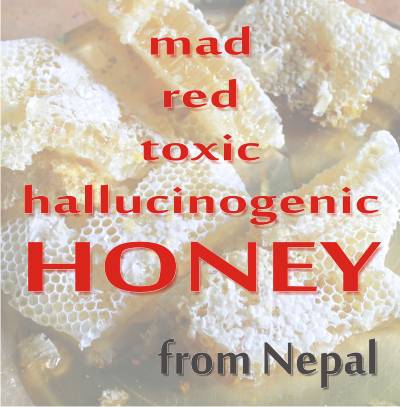
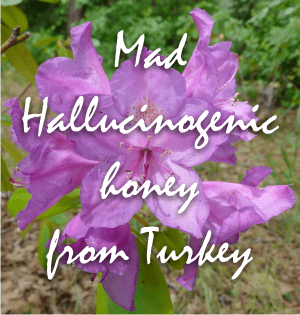
We have been using honey in our coffee for over a year now and we are in our 60’s. could this be a reason for the weight loss at our age?
I suspect that persons who take care of their health and put honey in coffee instead of sugar, have also led a pretty balanced life. And by that I understand exactly that: balance. Not much of anything.
It is important. Because honey and coffee, which are both excellent, are not the answer to all problems. 🙂
But yes, they do help in keeping your bodies fit and having them regularly have always provided the body with nutrients.
Honey will always be the best friend of our body.
Keep doing the same good job!
All the best!
Laura
Hi, I’ve kept bees for 12 years. Honey that remains liquid is not neccessarily adultered or overly processed. A lot depends on the nectar source. Some honey I eztract has remained liquid for over a year, while other sources crystallize so quickly that I have to be sure to bottle it within a week or two of extracting. I agree with your comment to find a trusted beekeeper to buy from, which most beekeepers are. If you sell a bad product it doesn’t take long for word to get around. Likewise, a good reputation as a beekeeper gets people knocking on your door to buy your honey. I’ve had to set up a self serve stand at my house to keep customers happy.
I got some fake Linden Honey from Germany at Ross Dress for Less. I know that linden honey crystallizes in winter time.
Mine is still beautiful golden and flowing.
I’m learning to buy honey from local beekeepers.
-Grants Pass, Oregon
Hi J.P.
Yes, it is possible that your honey is adulterated or way too much processed. You are right raw honey should crystallize. In winter I only buy crystallized honey. Buying from your locals is not necessary an indicator of good quality or of an unadulterated honey. Beekeepers can be frauds, too. Buying from a known, trustful beekeeper is the best solution, of course. But buying already crystallized honey is also indicated. Forget supermarkets and try online herb shops.
Laura